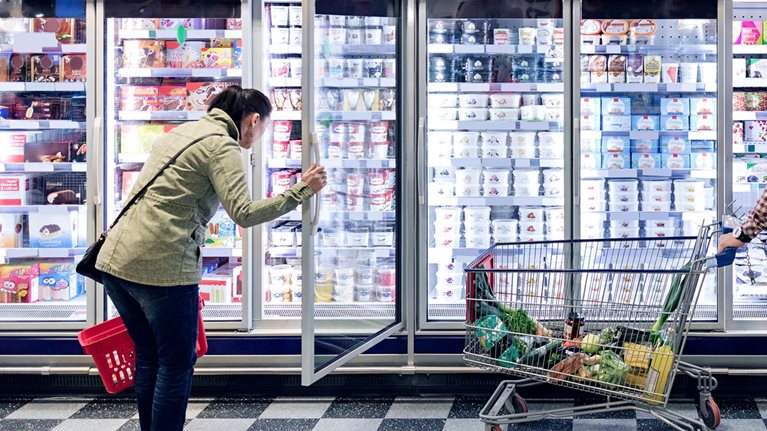The COVID-19 crisis forced everyone to be a bit more flexible. As consumer goods companies moved mountains to keep production on track, retailers relaxed their stringent service requirements by, for example, widening delivery windows and pausing penalties for late or incomplete shipments.
Now the pendulum is swinging back. A new McKinsey survey of 35 senior leaders at 28 companies in the North American consumer-packaged-goods (CPG) sector shows that performance expectations have already returned to prepandemic levels. Many large retailers are even increasing the demands they place upon their suppliers.
More than half of the CPG companies in our survey reported that retailers have tightened their on-time and in-full (OTIF) requirements by narrowing delivery windows and increasing fines for noncompliance. Some retailers are changing their definition of “in-full” delivery by switching from case fill to order or line fill (Exhibit 1). Additionally, 85 percent of those companies told us that over the past 12 months, at least one core retail customer has shifted from “requested” delivery dates to “scheduled” or “committed” delivery dates.

Mastering cost-to-serve tactics
To maintain margins in an environment where service requirements are high and rising, consumer goods companies need to get two things right. First, they need to understand the true cost of meeting their customers’ service expectations. Second, they need to ensure that their prices reflect the additional costs inherent in the nonstandard services customers may demand, such as expedited shipments, white-glove service, or complex order requirements.
Would you like to learn more about our Operations Practice?
Our survey suggests that CPG players have made more progress on the first task than the second. Every company we asked told us it had some form of cost-to-serve program, and three-quarters of respondents felt that their understanding of service costs was either “decent” or “robust.”
When it comes to clawing back those costs from customers, however, only 17 percent of respondents believe that they are recovering more than 75 percent of the true cost to serve, with most suggesting that they recoup only about half of their costs. And only four of the ten most common cost-to-serve levers are being applied by more than 60 percent of survey respondents (Exhibit 2).

Ensuring that pricing reflects the true cost-to-serve is important for multiple reasons: protecting CPG players from margin erosion, promoting equity among retailers, and preventing manufacturers from subsidizing one retailer’s unusual requirements on the backs of its competitors. Over time, more accurate pricing can also encourage retailer choices that reduce waste system-wide, bettering cost and environmental efficiency.
Fears of alienating powerful retailer customers may be overblown. Our survey suggests that a greater focus on collaboration and the pursuit of win–win solutions is a welcome consequence of COVID-19 practices. Some 80 percent of respondents told us that they were involved in new supplier-collaboration programs and that most retailers were seeking implementation in three to six months.
E-commerce: Stable, but not yet profitable
When it comes to e-commerce, our survey paints a similar picture. CPG players have made significant progress in addressing the operational challenges of direct-to-customer shipments, but it is not clear if they are accounting for the full costs involved.
Respondents believe that the balance of different e-commerce channels has stabilized: retailers handle just over half of their internet sales, direct-to-consumer sales account for a third, and the remainder is composed of drop-shipments conducted on retailers’ behalf. Two-thirds of respondents have adopted a multichannel approach, integrating their e-commerce operations with their brick-and-mortar supply chains. A quarter have chosen to run a separate, dedicated e-commerce operation, and the rest have outsourced internet fulfillment to third-party logistics service providers.

How consumer-packaged-goods companies can drive resilient growth
In comparison to previous surveys, CPG companies are much more confident in their ability to support e-commerce: more than 50 percent said their supply chains are ready for the challenges of e-commerce. On average, respondents felt that 70 percent of their product portfolios currently meet the packaging and safety requirements necessary for e-commerce shipments (Exhibit 3).

CPG players may feel they are cracking the code on e-commerce operations, but many still have work to do to ensure that those operations make money. Separate McKinsey research has found that logistics and on-site advertising costs eat up significantly more margin for goods sold through online channels versus brick-and-mortar stores. Logistics costs are particularly high for companies selling through the biggest online retailers, which tend to make smaller, less-predictable orders while still imposing stiff penalties for late or noncompliant deliveries.
Margins in the CPG sector are under pressure from inflation on one side and increasingly demanding customers on the other. In this environment, it is vital for companies to understand both the true cost of servicing those customers and the underlying factors that drive those costs. This is the right moment to engage with retailers and work together to optimize the end-to-end supply chain.


